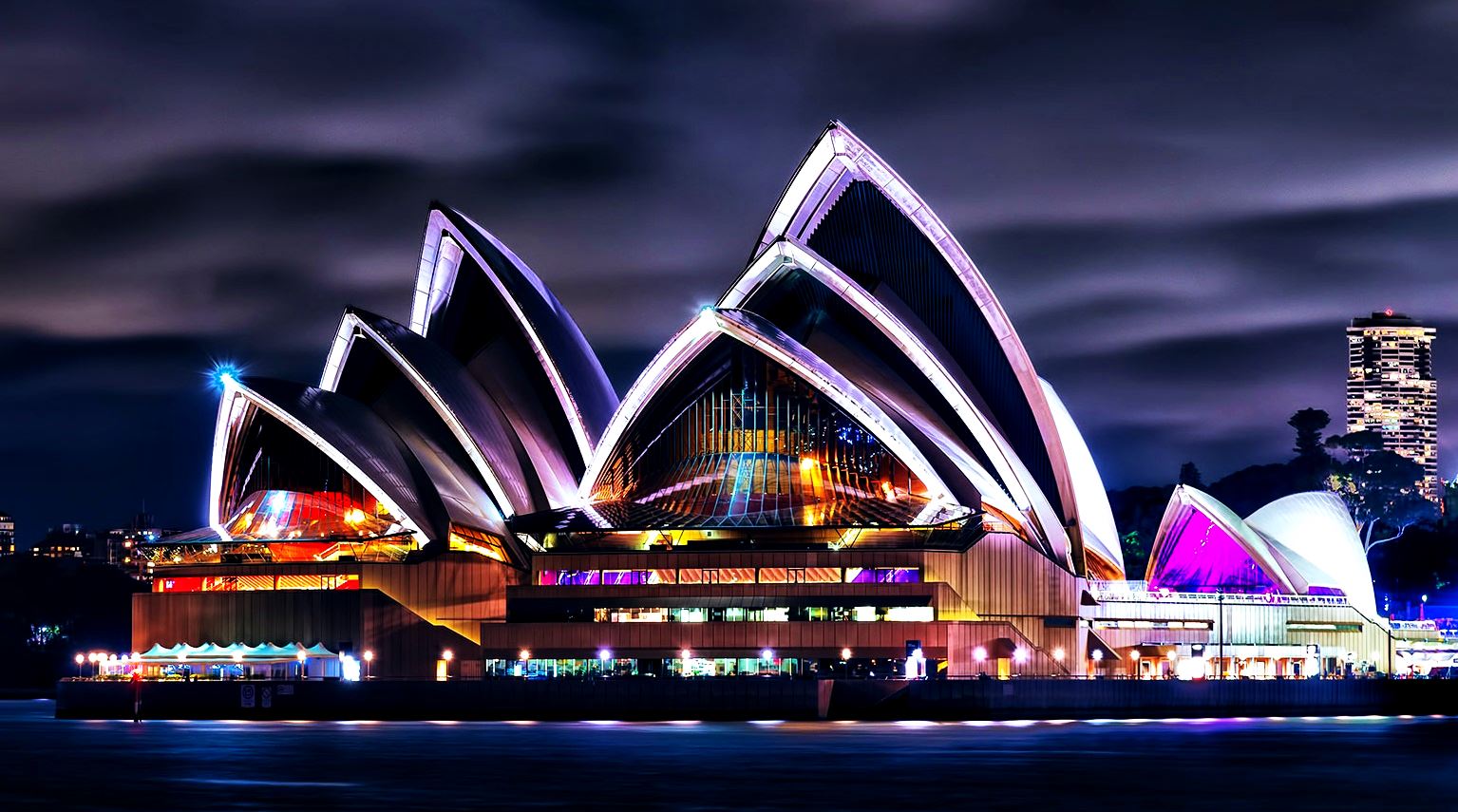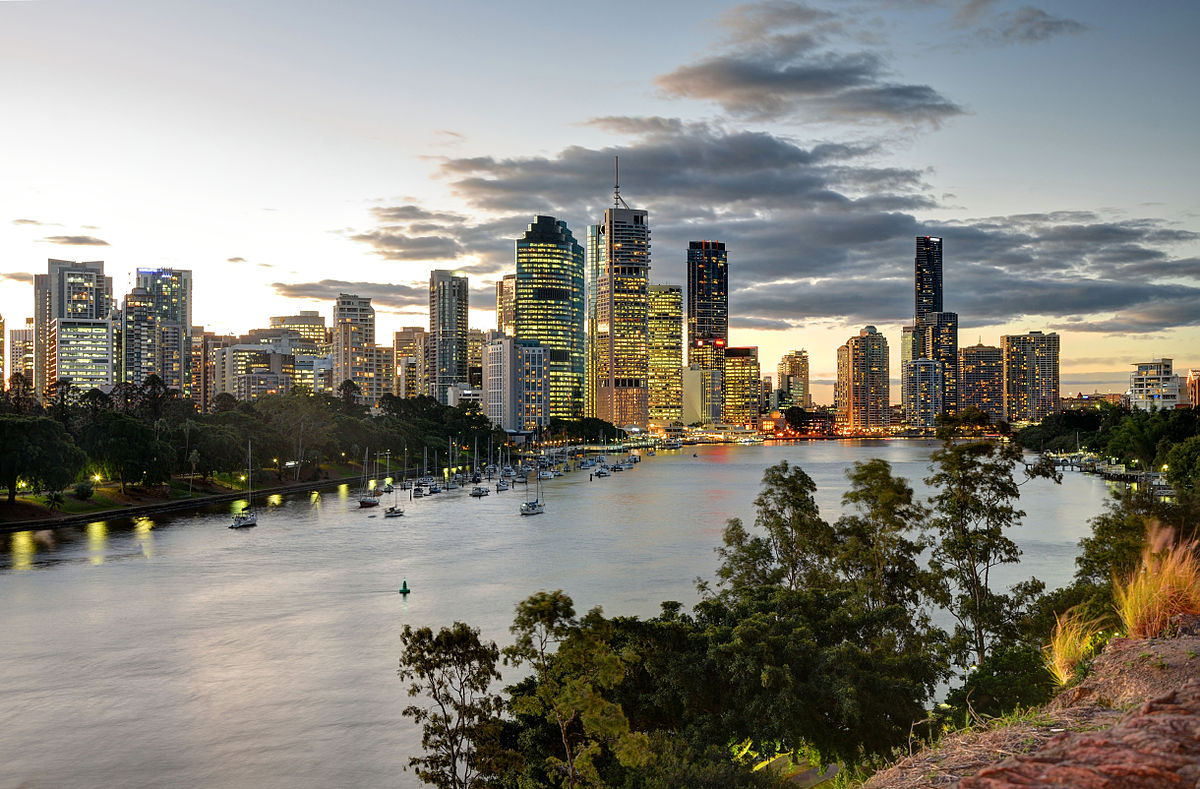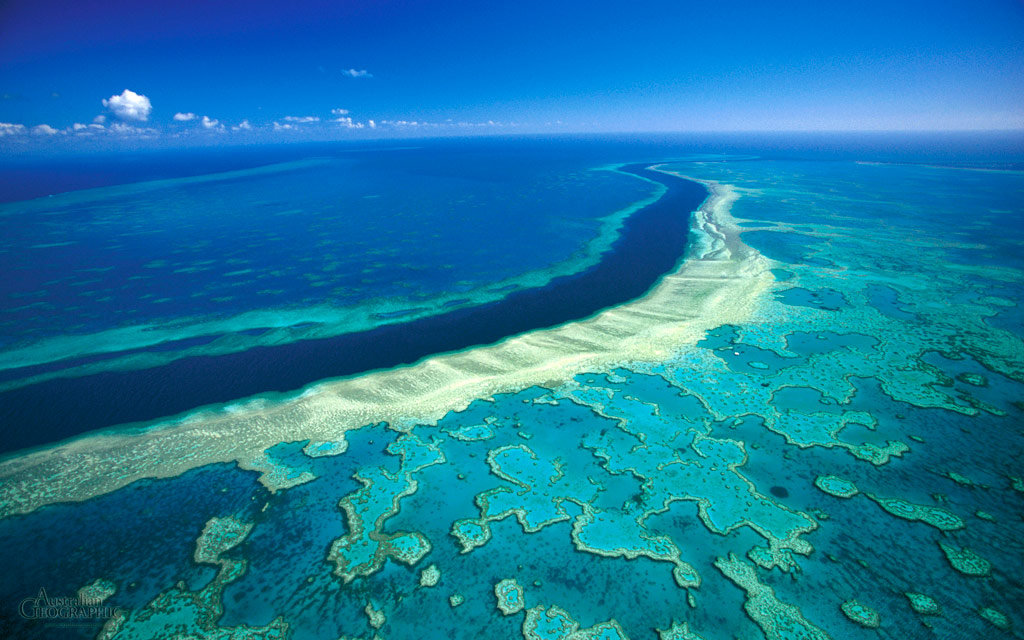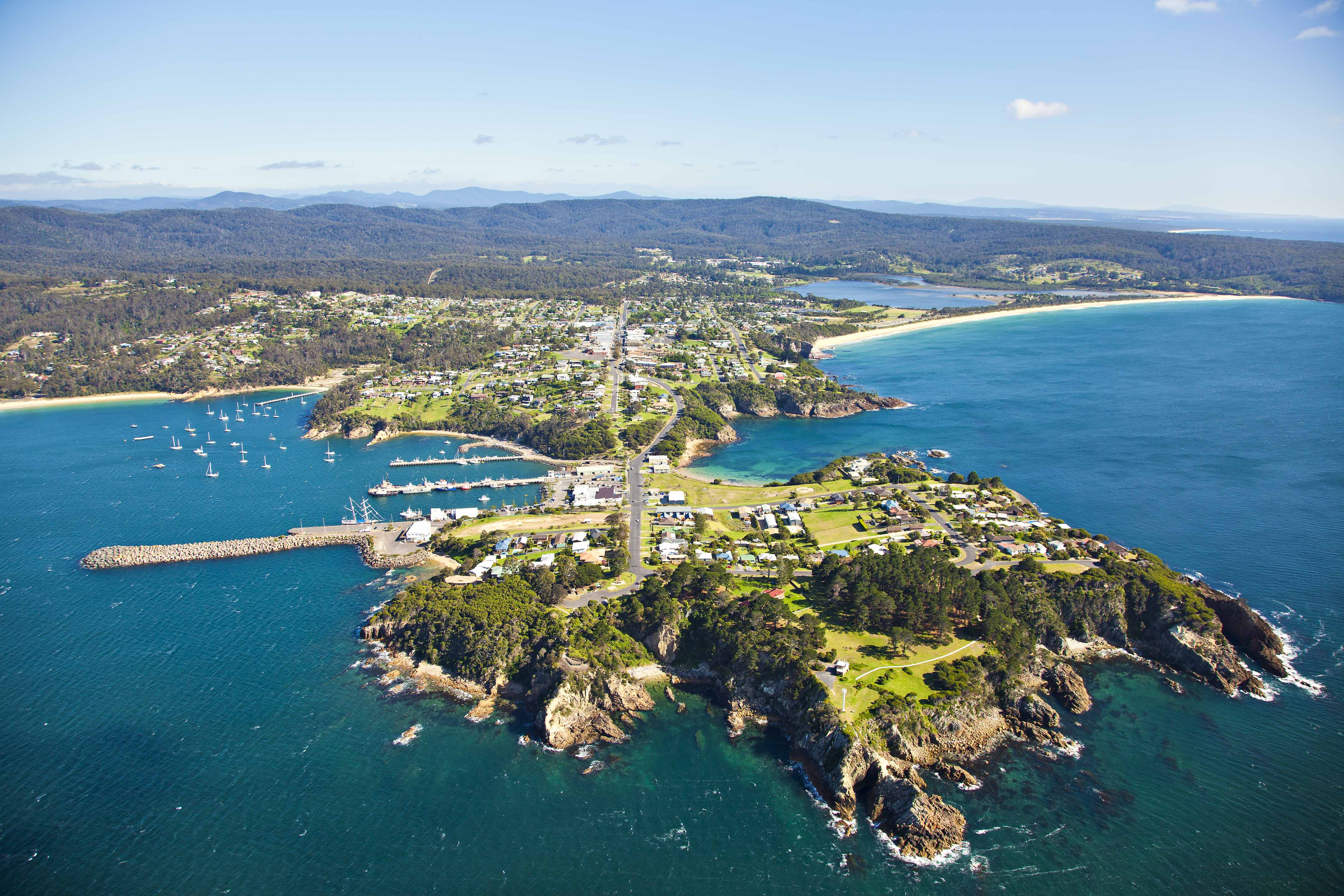

| Cruise Region : Australia / New Zealand |
| Company Category : Luxury |
| Company name : Regent Seven Seas Cruises |
| Ship name : Seven Seas Navigator |
| Journey Start Date : Thu 23 Jan 2020 |
| Journey End Date : Fri 28 Feb 2020 |
| Port start : Sydney / Australia |
| Port end : Sydney / Australia |
| Count Nights : 36 nights |
| Day | Port | Date | Arrival | Departure |
|---|---|---|---|---|
| 1 | Sydney / Australia | Thu 23 Jan | 18:00 | |
| 2 | Day at sea / Sea | Fri 24 Jan | ||
| 3 | Brisbane / Australia | Sat 25 Jan | 08:00 | 21:00 |
| 4 | Мулулаба Mooloolaba / Australia | Sun 26 Jan | 08:00 | 17:00 |
| 5 | Day at sea / Sea | Mon 27 Jan | ||
| 6 | Great Barrier Reef (Arleigh Beach) / Australia | Tue 28 Jan | 07:00 | 15:00 |
| 7 | Cairns / Australia | Wed 29 Jan | 10:00 | 21:00 |
| 8 | Day at sea / Sea | Thu 30 Jan | ||
| 9 | Alatau / Papua New Guinea | Fri 31 Jan | 08:00 | 16:00 |
| 10 | Port Moresby / Papua New Guinea | Sat 01 Feb | 10:00 | 20:00 |
| 11 | Day at sea / Sea | Sun 02 Feb | ||
| 12 | Day at sea / Sea | Mon 03 Feb | ||
| 13 | Darwin / Australia | Tue 04 Feb | 09:00 | 19:00 |
| 14 | Day at sea / Sea | Wed 05 Feb | ||
| 15 | Chest of drawers / Indonesia | Thu 06 Feb | 13:00 | 19:00 |
| 16 | Bali / Indonesia | Fri 07 Feb | 13:00 | |
| 17 | Bali / Indonesia | Sat 08 Feb | 16:00 | |
| 18 | Day at sea / Sea | Sun 09 Feb | ||
| 19 | Day at sea / Sea | Mon 10 Feb | ||
| 20 | Exmouth / Great Britain | Tue 11 Feb | 08:00 | 19:00 |
| 21 | Day at sea / Sea | Wed 12 Feb | ||
| 22 | Geraldton / Australia | Thu 13 Feb | 08:00 | 18:00 |
| 23 | Perth / Australia | Fri 14 Feb | 10:00 | 20:00 |
| 24 | Day at sea / Sea | Sat 15 Feb | ||
| 25 | Esperance / Australia | Sun 16 Feb | 08:00 | 18:00 |
| 26 | Day at sea / Sea | Mon 17 Feb | ||
| 27 | Day at sea / Sea | Tue 18 Feb | ||
| 28 | Adelaide / Australia | Wed 19 Feb | 08:00 | 23:00 |
| 29 | Kangaroo Valley / Australia | Thu 20 Feb | 08:00 | 16:00 |
| 30 | Portland / USA | Fri 21 Feb | 10:00 | 18:00 |
| 31 | Melbourne / Australia | Sat 22 Feb | 10:00 | |
| 32 | Melbourne / Australia | Sun 23 Feb | 23:00 | |
| 33 | Phillip Phillip / Australia | Mon 24 Feb | 08:00 | 22:00 |
| 34 | Bernie (Tasmania) Burney / Austria | Tue 25 Feb | 10:00 | 20:00 |
| 35 | Day at sea / Sea | Wed 26 Feb | ||
| 36 | Future / Australia | Thu 27 Feb | 08:00 | 15:00 |
| 37 | Sydney / Australia | Fri 28 Feb | 08:00 |

Sydney is the state capital of New South Wales and the most populous city in Australiaand Oceania. Located on Australia's east coast, the metropolis surrounds Port Jackson and extends about 70 km (43.5 mi) on its periphery towards the Blue Mountains to the west, Hawkesbury to the north, and Macarthur to the south. Sydney is made up of 658 suburbs, 40 local government areas and 15 contiguous regions. Residents of the city are known as "Sydneysiders". As of June 2017, Sydney's estimated metropolitan population was 5,131,326, and is home to approximately 65% of the state's population.


Брисбен — яркая столица штата Квинсленд в Австралии. Третий, по численности населения, город в стране. Город известен своими многочисленными парками, бизнес-центрами, а так же организацией различных семинаров, выставок и конференций. Местной достопримечательностью является Ботанический сад, который вмещает более 2000 видов растений. Интерес гостей города вызывают так же: военно-морской музей, заповедник «Лоун Пайн Коала» и планетарий «Сэра Томаса Брисбена», Городскую ратушу и площадь Кинг Джордж, и, конечно же, известны брисбенский мост.



The Great Barrier Reef is the world's largest coral reef system composed of over 2,900 individual reefs and 900 islands stretching for over 2,300 kilometres (1,400 mi) over an area of approximately 344,400 square kilometres (133,000 sq mi). The reef is located in the Coral Sea, off the coast of Queensland, Australia. The Great Barrier Reef can be seen from outer space and is the world's biggest single structure made by living organisms. This reef structure is composed of and built by billions of tiny organisms, known as coral polyps. It supports a wide diversity of life and was selected as a World Heritage Site in 1981. CNN labelled it one of the seven natural wonders of the world.The Queensland National Trust named it a state icon of Queensland.

Cairns City is the suburb at the centre of Cairns in the local government area of Cairns Region, Queensland, Australia.It can also be referred to as the Cairns Central Business District (CBD). In the 2011 census, the population of Cairns City was 2,737 people.






Darwin is the capital city of the Northern Territory of Australia, situated on the Timor Sea. It is the largest city in the sparsely populated Northern Territory, with a population of 145,916. It is the smallest and most northerly of the Australian capital cities, and acts as the Top End's regional centre.


Komodo is one of the 17,508 islands that comprise the Republic of Indonesia. The island is particularly notable as the habitat of the Komodo dragon, the largest lizard on Earth, which is named after the island. Komodo Island has a surface area of 390 square kilometres and a human population of over two thousand. The people of the island are descendants of former convicts who were exiled to the island and who have mixed with Bugis from Sulawesi. The people are primarily adherents of Islam but there are also Christian and Hindu congregations.
Komodo is part of the Lesser Sunda chain of islands and forms part of the Komodo National Park. In addition, the island is a popular destination for diving. Administratively, it is part of the East Nusa Tenggara province.

Bali is a province of Indonesia and the westernmost of the Lesser Sunda Islands. Located east of Java and west of Lombok, the province includes the island of Bali and a few smaller neighbouring islands, notably Nusa Penida, Nusa Lembongan, and Nusa Ceningan. The provincial capital, Denpasar, is the most populous city in the Lesser Sunda Islands and the second largest, after Makassar, in Eastern Indonesia. Bali is the only Hindu-majority province in Indonesia, with 83.5% of the population adhering to Balinese Hinduism.
Bali is Indonesia's main tourist destination, which has seen a significant rise in tourists since the 1980s. Tourism-related business makes up 80% of its economy. It is renowned for its highly developed arts, including traditional and modern dance, sculpture, painting, leather, metalworking, and music. The Indonesian International Film Festival is held every year in Bali. In March 2017, TripAdvisor named Bali as the world's top destination in its Traveller's Choice award.
Bali is part of the Coral Triangle, the area with the highest biodiversity of marine species. In this area alone, over 500 reef-building coral species can be found. For comparison, this is about seven times as many as in the entire Caribbean. Most recently, Bali was the host of the Miss World 2013 and 2018 Annual Meetings of the International Monetary Fund and the World Bank Group. Bali is the home of the Subak irrigation system, a UNESCO World Heritage Site. It is also home to a unified confederation of kingdoms composed of 10 traditional royal Balinese houses, each house ruling a specific geographic area. The confederation is the successor of the Bali Kingdom. The royal houses are not recognised by the government of Indonesia; however, they originated before Dutch colonisation.

Bali is a province of Indonesia and the westernmost of the Lesser Sunda Islands. Located east of Java and west of Lombok, the province includes the island of Bali and a few smaller neighbouring islands, notably Nusa Penida, Nusa Lembongan, and Nusa Ceningan. The provincial capital, Denpasar, is the most populous city in the Lesser Sunda Islands and the second largest, after Makassar, in Eastern Indonesia. Bali is the only Hindu-majority province in Indonesia, with 83.5% of the population adhering to Balinese Hinduism.
Bali is Indonesia's main tourist destination, which has seen a significant rise in tourists since the 1980s. Tourism-related business makes up 80% of its economy. It is renowned for its highly developed arts, including traditional and modern dance, sculpture, painting, leather, metalworking, and music. The Indonesian International Film Festival is held every year in Bali. In March 2017, TripAdvisor named Bali as the world's top destination in its Traveller's Choice award.
Bali is part of the Coral Triangle, the area with the highest biodiversity of marine species. In this area alone, over 500 reef-building coral species can be found. For comparison, this is about seven times as many as in the entire Caribbean. Most recently, Bali was the host of the Miss World 2013 and 2018 Annual Meetings of the International Monetary Fund and the World Bank Group. Bali is the home of the Subak irrigation system, a UNESCO World Heritage Site. It is also home to a unified confederation of kingdoms composed of 10 traditional royal Balinese houses, each house ruling a specific geographic area. The confederation is the successor of the Bali Kingdom. The royal houses are not recognised by the government of Indonesia; however, they originated before Dutch colonisation.











Adelaide is the capital city of the state of South Australia, and the fifth-most populous city of Australia. In June 2017, Adelaide had an estimated resident population of 1,333,927. Adelaide is home to more than 75 percent of the South Australian population, making it the most centralised population of any state in Australia.



Melbourne is the capital and most populous city of the Australian state of Victoria, and the second most populous city in Australia and Oceania. Its name refers to an urban agglomeration of 9,992.5 km2 (3,858.1 sq mi), comprising a metropolitan area with 31 municipalities, and is also the common name for its city centre. The city occupies much of the coastline of Port Phillip bay and spreads into the hinterlands towards the Dandenong and Macedon ranges, Mornington Peninsula and Yarra Valley. It has a population of approximately 4.9 million (19% of the population of Australia), and its inhabitants are referred to as "Melburnians".
The city was founded on 30 August 1835, in what was the British colony of New South Wales, by free settlers from the colony of Van Diemen’s Land. It was incorporated as a Crown settlement in 1837 and named in honour of the British Prime Minister, William Lamb, 2nd Viscount Melbourne. It was declared a city by Queen Victoria in 1847, after which it became the capital of the new colony of Victoria in 1851. In the wake of the 1850s Victorian gold rush, the city entered the "Marvellous Melbourne" boom period, transforming into one of the most important cities in the British Empire and one of the largest and wealthiest in the world. After the federation of Australia in 1901, it served as interim seat of government of the new nation until Canberra became the permanent capital in 1927. Today, it is a leading financial centre in the Asia-Pacific region and ranks 20th in the Global Financial Centres Index.

Melbourne is the capital and most populous city of the Australian state of Victoria, and the second most populous city in Australia and Oceania. Its name refers to an urban agglomeration of 9,992.5 km2 (3,858.1 sq mi), comprising a metropolitan area with 31 municipalities, and is also the common name for its city centre. The city occupies much of the coastline of Port Phillip bay and spreads into the hinterlands towards the Dandenong and Macedon ranges, Mornington Peninsula and Yarra Valley. It has a population of approximately 4.9 million (19% of the population of Australia), and its inhabitants are referred to as "Melburnians".
The city was founded on 30 August 1835, in what was the British colony of New South Wales, by free settlers from the colony of Van Diemen’s Land. It was incorporated as a Crown settlement in 1837 and named in honour of the British Prime Minister, William Lamb, 2nd Viscount Melbourne. It was declared a city by Queen Victoria in 1847, after which it became the capital of the new colony of Victoria in 1851. In the wake of the 1850s Victorian gold rush, the city entered the "Marvellous Melbourne" boom period, transforming into one of the most important cities in the British Empire and one of the largest and wealthiest in the world. After the federation of Australia in 1901, it served as interim seat of government of the new nation until Canberra became the permanent capital in 1927. Today, it is a leading financial centre in the Asia-Pacific region and ranks 20th in the Global Financial Centres Index.


Burney



Sydney is the state capital of New South Wales and the most populous city in Australiaand Oceania. Located on Australia's east coast, the metropolis surrounds Port Jackson and extends about 70 km (43.5 mi) on its periphery towards the Blue Mountains to the west, Hawkesbury to the north, and Macarthur to the south. Sydney is made up of 658 suburbs, 40 local government areas and 15 contiguous regions. Residents of the city are known as "Sydneysiders". As of June 2017, Sydney's estimated metropolitan population was 5,131,326, and is home to approximately 65% of the state's population.